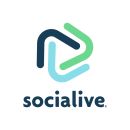To take a leap of faith is to do something even though you are not sure it is right or will succeed. In short, to take a leap of faith is to risk failure.
Today, 52 percent of U.S. workers are contemplating a job change, and as many as 44 percent have plans in place to make the leap, according to a 2021 survey conducted by The Harris Poll for Fast Company.
That potential gamble may be even more challenging for women, who usually only consider positions they are 100 percent qualified for. So, how did Kristen Ellerbe Taylor know a career pivot from engineering to product was the right move for her?
“Honest truth: I didn’t,” she said. However, she had the support of a sponsor who was rooting for her success, which made all the difference.
When it came to her career transition, Ellerbe Taylor took a fun-loving approach to learning new skills for product management: She turned it into a game. Engineers make great product managers because they speak the language, and both roles require problem-solving skills. But product managers need to have influence, be excellent communicators and think strategically instead of operationally. Essentially, product managers figure out the “what” and “why,” while engineers figure out the “how.” Ellerbe Taylor realized her new path was a good fit when she enjoyed honing these competencies.
Today Ellerbe Taylor is a director of engineering at Socialive, an enterprise video platform for capturing, creating and distributing video. Built In LA sat down with her for more details about how she survived and thrived after a leap-of-faith career change.
Making a lateral career move can feel pretty scary. How did you know it was the right move for you, and what steps did you take to make it happen?
Luckily I had a really good female sponsor who encouraged me. She reminded me that my current skills weren’t going anywhere, so I could always go back. More than that, she had the utmost faith that I would flourish in a product role.
To prepare for the interview and then the role, I did what all engineers do: find free resources online and turn it into a game. I started with the gap between what I didn’t know and what I needed to know. I knew it was a good fit when I realized how much I enjoyed learning it. Then, I had to trust that I was aligning my skills and passions better in my new role and that my inherent value and worth would shine through.
I had to trust that I was aligning my skills and passions better in my new role and that my inherent value and worth would shine through.”
When it comes to your career trajectory, professional growth or general enthusiasm for your job, what has the transition into this new role unlocked for you?
I moved from being an individual contributing engineer to a director, managing teams in way less time than I ever imagined. My lateral transition allowed me to cross-train, gain new skills and build relationships across departments. I learned skills that I wouldn’t have developed if I had stayed in engineering.
I found my passion for bringing business value and technology together. It opened up doors for opportunities I couldn’t have imagined. This move gave me momentum with mentorships from marketing and sales back to product and engineering. When I stepped away from engineering and out into the unknown, a passion was born: I want to help find the right people to be in the right places to build amazing products.
What advice do you have for other people who are considering making a lateral career move?
Lateral career moves can be scary because you risk failure, or maybe you’re passing up on advancement if you stay. They’re pivots in professional growth. Companies change strategies to meet their vision all the time. It feeds innovation. That same theory applies to you. There is more than one path to your vision, and your vision might need to be fine-tuned. I used to believe that, because I wanted to build cool products, I needed to be the one to build them. Now I understand that, in order to fulfill my desire to build cool products, I need to enable the people who build them.
You must pivot to align your vision with your talents. That might mean slightly changing your approach and becoming a data scientist instead of an engineer. It could also mean completely moving to another sphere and leaving sales behind to move into finance. Your path is yours and yours alone. So don’t be afraid to take risks to bring your passions and skills together to create the vision only you can see.










